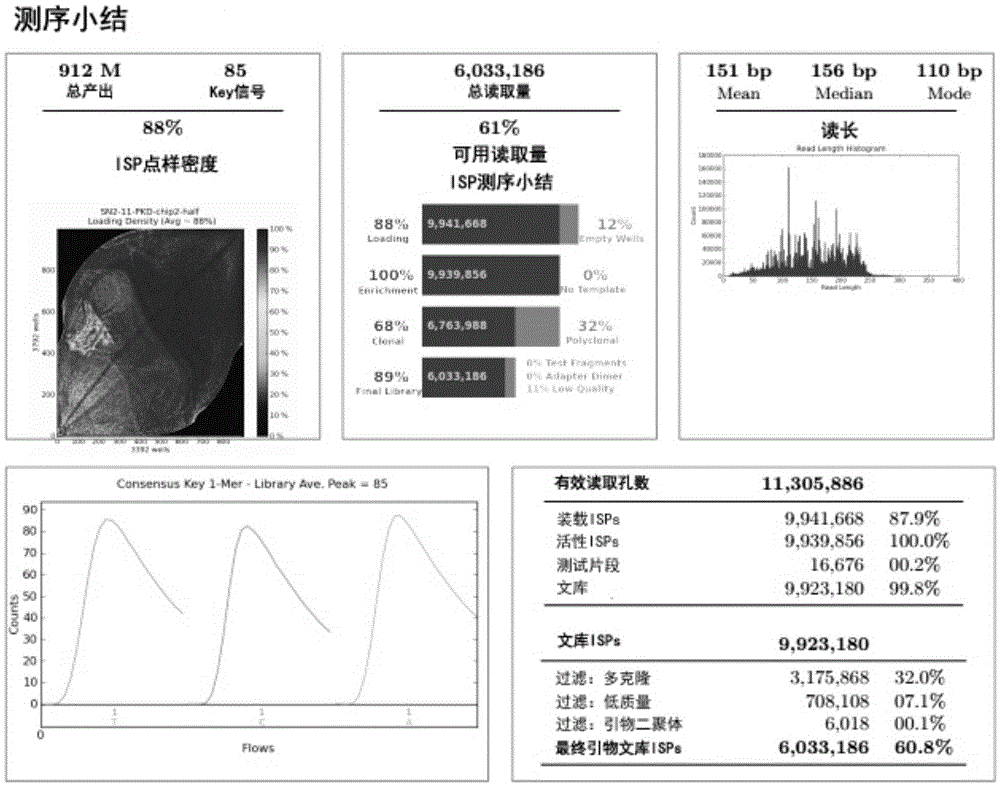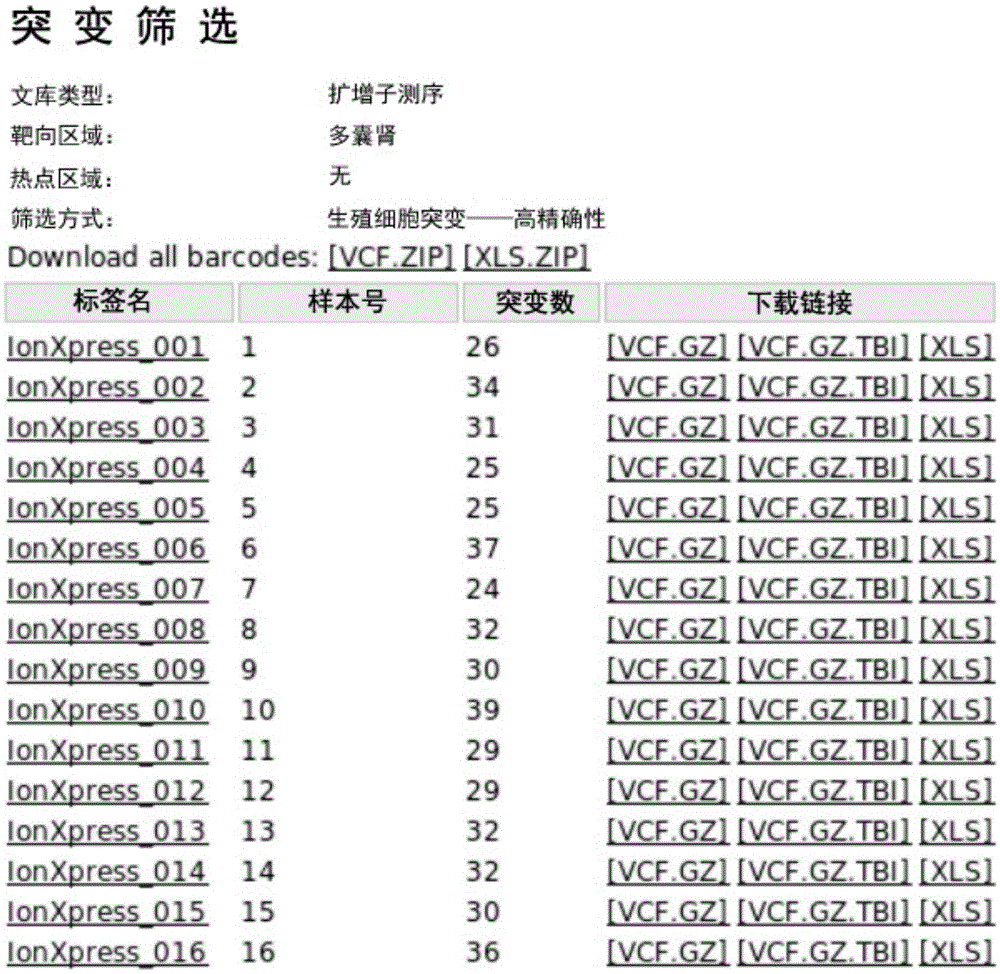DNA library for detection and diagnosis of polycystic kidney causing genes and application thereof
A DNA library and pathogenic gene technology, applied in the field of DNA library, can solve the problems of inability to accurately distinguish specific types of polycystic kidney disease, inability to meet the timeliness of multi-sample detection, and inability to accurately diagnose young patients, so as to avoid recurrence. Risk of polycystic kidney disease, early occultation, and improved survival
- Summary
- Abstract
- Description
- Claims
- Application Information
AI Technical Summary
Problems solved by technology
Method used
Image
Examples
Embodiment 1
[0053] 1. Reagents used in the method:
[0054] Ion AmpliSeq TM LibraryKit2.0, IonPGM TM TemplateOT2200Kitv3, Ion Sequencing200Kitv2, IonXpressBarcodeAdaptors1-16Kit, Ion318 TM ChipKitv2
[0055] 2. Specimen collection and preservation
[0056] (1) Specimen collection: The specimen is the peripheral blood of the patient. Blood is 5ml of venous blood taken routinely, treated with EDTA anticoagulant.
[0057] (2) Storage: It can be detected immediately, stored at 4°C for one week, and stored at -80°C for more than one week.
[0058] 3. Detection steps and result analysis:
[0059] (1) Extraction of genomic DNA of specimens: DNA extraction of specimens was carried out according to the operation instructions of the blood DNA extraction kit of Tiangen Biochemical Technology (Beijing) Co., Ltd.
[0060] (2) Super multiplex PCR amplification and library building of the target detection area: the whole exons of the 6 genes involved in the present invention are used as the det...
Embodiment 2
[0099] In the present invention, the primer pool contains 3 polycystic kidney disease-causing genes newly discovered by the inventor, as shown in the following table:
[0100] serial number
gene name
OMIM number
Associated disease
1
TSC1
605284
autosomal dominant polycystic kidney disease
2
TSC2
191092
autosomal dominant polycystic kidney disease
3
DKK3
605416
autosomal dominant polycystic kidney disease
[0101] The newly discovered 3 polycystic kidney disease genes come from the research accumulation and family investigation of the inventors over the years. The inventor first searches the known polycystic kidney disease-causing genes through the KEGG signaling pathway and the homologous gene library to find the homologous genes of the known polycystic kidney disease genes and the key genes on the same pathogenic pathway. Then, targeted high-throughput sequencing of candidate disease-causing gen...
PUM
 Login to View More
Login to View More Abstract
Description
Claims
Application Information
 Login to View More
Login to View More - R&D
- Intellectual Property
- Life Sciences
- Materials
- Tech Scout
- Unparalleled Data Quality
- Higher Quality Content
- 60% Fewer Hallucinations
Browse by: Latest US Patents, China's latest patents, Technical Efficacy Thesaurus, Application Domain, Technology Topic, Popular Technical Reports.
© 2025 PatSnap. All rights reserved.Legal|Privacy policy|Modern Slavery Act Transparency Statement|Sitemap|About US| Contact US: help@patsnap.com



